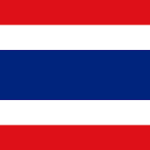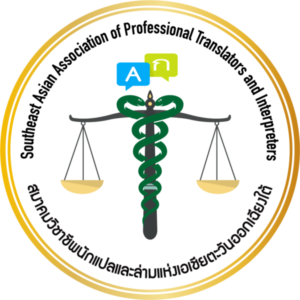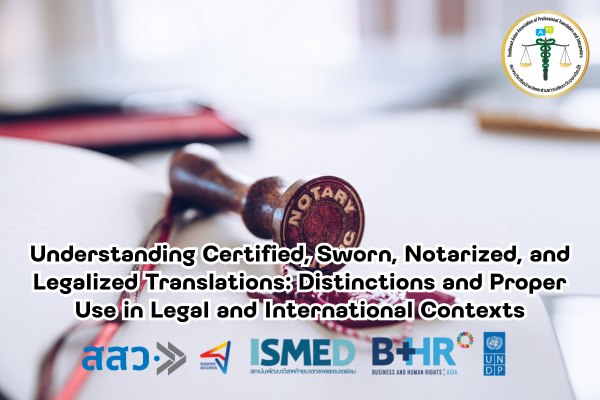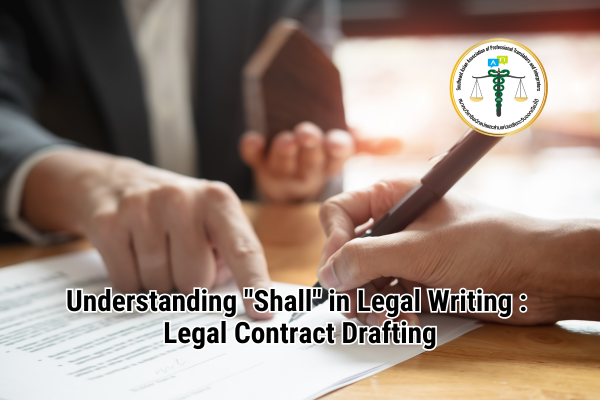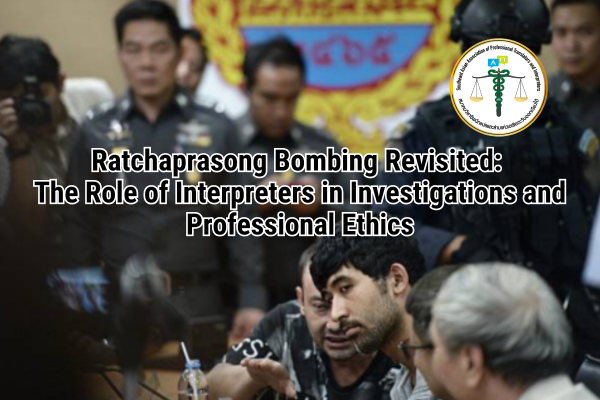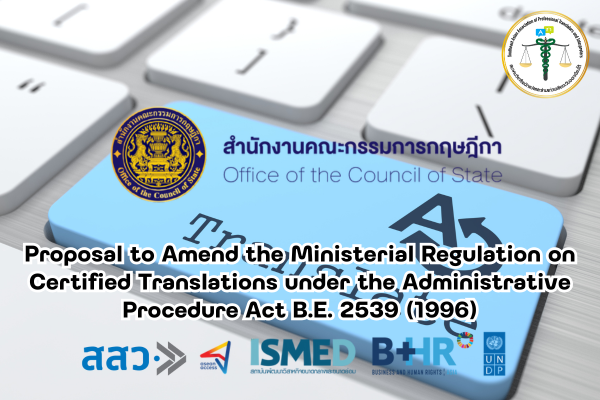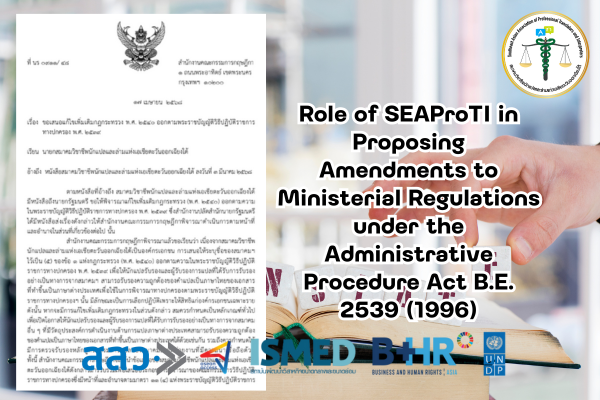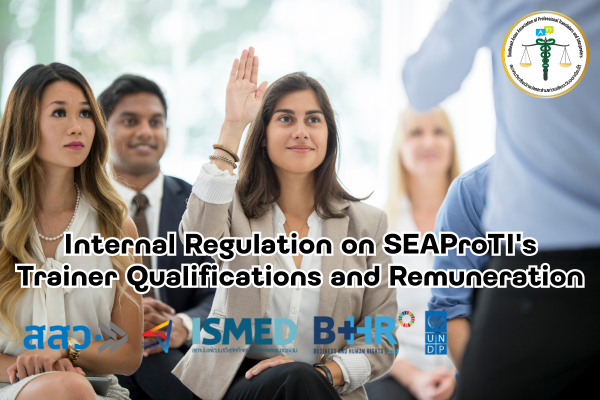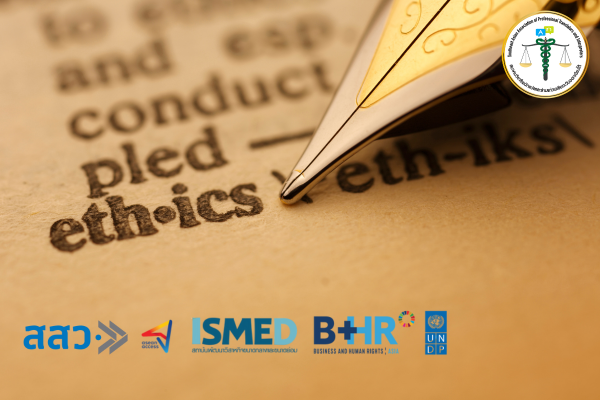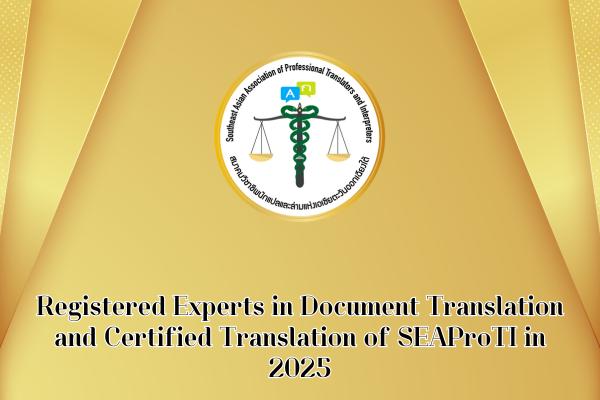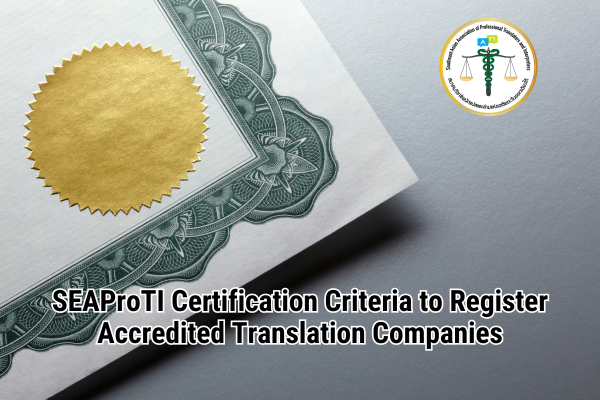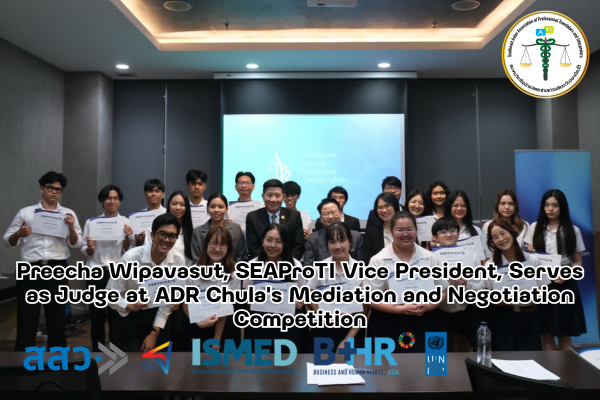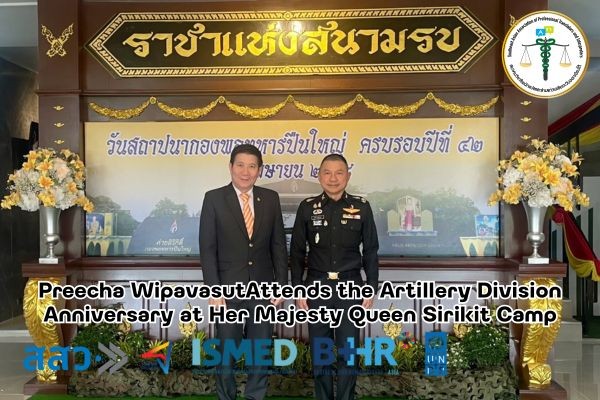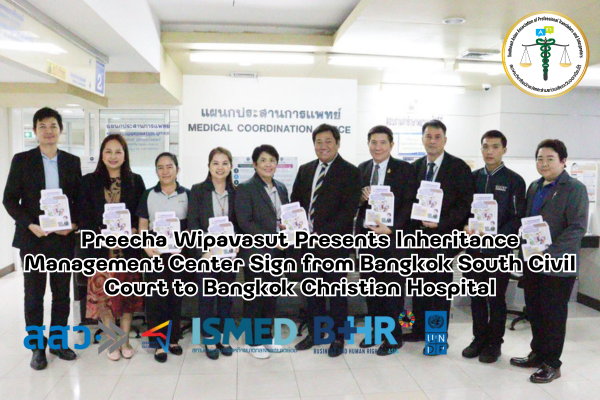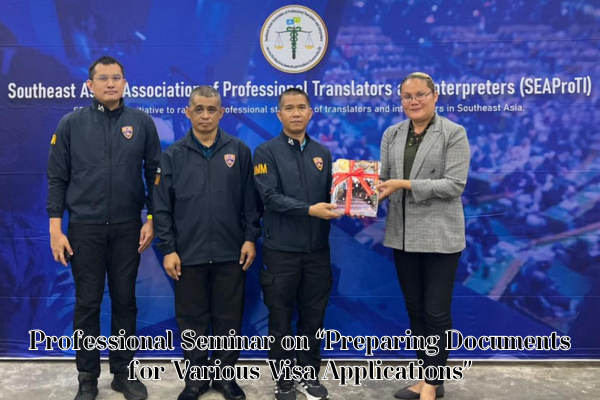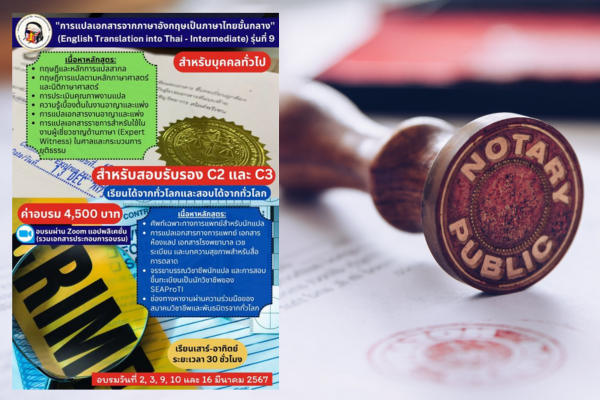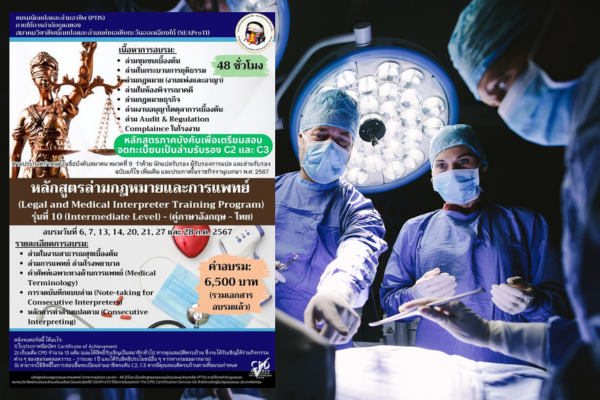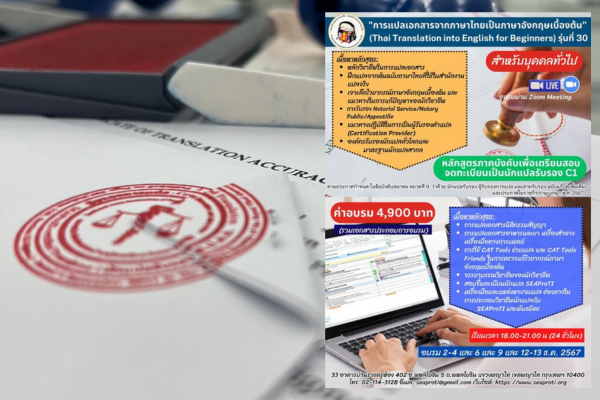Understanding Certified, Sworn, Notarized, and Legalized Translations: Distinctions and Proper Use in Legal and International Contexts
19 April 2025, Bangkok – The concept of document translation for use in legal proceedings, education, or international transactions involves various forms of certification depending on the legal framework and administrative requirements of each country. Generally, certified translations can be categorized into four main types: Certified Translation, Sworn Translation, Notarized Translation, and Legalized Translation. Each type differs in terms of the certifying authority, procedural steps, and intended use.
Certified Translation
Certified translation is one of the most commonly used forms of translation, particularly in English-speaking countries such as the United States, United Kingdom, Canada, Australia, and New Zealand. In this format, the translator or translation agency provides a signed statement attesting that the translation is complete and accurate to the best of their knowledge and ability. The certification statement typically includes the translator’s signature, contact information, and date of certification.
This type of translation is often required for visa applications, legal status verification, academic transcripts, and submissions to government authorities. In some countries, additional qualifications may be necessary for the translator, such as accreditation from bodies like the ATA (American Translators Association) in the U.S. or NAATI (National Accreditation Authority for Translators and Interpreters) in Australia.
Sworn Translation
Sworn translation is a specific format used in countries that have an official registry of government-appointed translators, such as France, Germany, Spain, Italy, and the Netherlands. A sworn translator is authorized by a court or government authority and has the legal capacity to produce translations that carry the same legal weight as the original document.
One of the key advantages of sworn translations is that they are directly accepted in court or by local government agencies without requiring further certification. However, if the document is to be used abroad, additional legalization (or Apostille) may still be necessary.
Notarized Translation
A notarized translation involves an additional step beyond certified translation. Once the translation is completed and certified, it is presented to a Notary Public, who verifies the identity of the translator or the person signing the certification statement. It is important to note that the notary does not review the accuracy of the translation content; rather, they certify the authenticity of the signature or identity of the certifier.
This type of translation is often required by certain embassies or court systems that seek to confirm the identity of the translator. However, notarized translations are not legally equivalent to sworn translations and may not be sufficient in jurisdictions that require a sworn translator.
Legalized Translation (or Apostilled Translation)
Legalized translations are certified or sworn translations that are subsequently validated by a government authority, such as a Ministry of Foreign Affairs or Attorney General’s Office. The goal is to verify the legitimacy of the translator’s signature or the certification document so the translated document can be legally used in a foreign country.
In countries that are party to the Hague Apostille Convention, the legalization process can take the form of an Apostille, which streamlines the acceptance of public documents for international use. Countries such as Switzerland, the United Kingdom, Japan, and many others recognize Apostilled documents without requiring further legalization.
Documents typically requiring legalization include official civil documents (e.g., birth, marriage, and divorce certificates), academic records, patent registrations, court documents, powers of attorney, and business contracts used in cross-border transactions.
Conclusion
While all four types of certified translations involve some level of attestation, their legal standing and procedural requirements vary significantly. It is therefore essential for individuals or organizations submitting translated documents to verify the exact certification format required by the receiving authority to avoid unnecessary delays, rejection, or the need to re-translate.
Engaging a professional translator who understands the legal and administrative systems of the relevant countries — and who can advise on the appropriate certification format — is critical to ensuring that international transactions and legal processes proceed efficiently and in full compliance with applicable laws.
SEAProTI’s certified translators, translation certification providers, and certified interpreters:
The Southeast Asian Association of Professional Translators and Interpreters (SEAProTI) has officially announced the criteria and qualifications for individuals to register as “Certified Translators,” “Translation Certification Providers,” and “Certified Interpreters” under the association’s regulations. These guidelines are detailed in Sections 9 and 10 of the Royal Thai Government Gazette, issued by the Secretariat of the Cabinet under the Office of the Prime Minister of the Kingdom of Thailand, dated July 25, 2024, Volume 141, Part 66 Ng, Page 100.
To read the full publication, visit: the Royal Thai Government Gazette
ความเข้าใจเรื่องการแปลรับรอง: จำแนก Certified, Sworn, Notarized และ Legalized Translation เพื่อการใช้งานทางกฎหมายและระหว่างประเทศอย่างถูกต้อง
19 เมษายน 2568, กรุงเทพ – แนวคิดเรื่องการแปลเอกสารเพื่อใช้ในกระบวนการทางกฎหมาย การศึกษา หรือการดำเนินการด้านนิติกรรมระหว่างประเทศนั้น จำเป็นต้องอาศัยรูปแบบการรับรองที่แตกต่างกันออกไปตามกฎหมายและข้อกำหนดของแต่ละประเทศ โดยทั่วไปมีการจัดจำแนกรูปแบบการรับรองการแปลออกเป็น 4 ประเภทหลัก ได้แก่ การแปลรับรอง (Certified Translation), การแปลสาบานตน (Sworn Translation), การแปลรับรองโดยโนตารี (Notarized Translation) และการแปลที่ผ่านการรับรองและประทับตรารับรองจากหน่วยงานรัฐ (Legalized Translation) ซึ่งแต่ละประเภทมีความแตกต่างทั้งในแง่ของผู้มีอำนาจรับรอง กระบวนการที่เกี่ยวข้อง และวัตถุประสงค์ในการนำไปใช้งาน
การแปลรับรอง (Certified Translation)
การแปลรับรองเป็นรูปแบบที่ได้รับความนิยมสูงที่สุดในหลายประเทศ โดยเฉพาะกลุ่มประเทศที่ใช้ภาษาอังกฤษเป็นหลัก เช่น สหรัฐอเมริกา สหราชอาณาจักร แคนาดา ออสเตรเลีย และนิวซีแลนด์ โดยนักแปลหรือบริษัทแปลจะจัดทำคำแถลงรับรองแนบท้ายเอกสารแปล ซึ่งยืนยันว่าเอกสารแปลนั้นมีความถูกต้องและครบถ้วนตรงตามต้นฉบับ โดยคำแถลงดังกล่าวต้องลงลายมือชื่อของนักแปลหรือผู้แทนบริษัทแปล รวมถึงรายละเอียดการติดต่อและวันที่รับรอง
การแปลรับรองในลักษณะนี้มักใช้ในกระบวนการยื่นขอวีซ่า การขอรับรองสถานภาพทางกฎหมาย การยื่นเอกสารทางการศึกษา และการยื่นคำร้องต่อหน่วยงานภาครัฐ ซึ่งในบางประเทศอาจมีข้อกำหนดเพิ่มเติมให้ผู้แปลต้องมีคุณวุฒิหรือขึ้นทะเบียนกับหน่วยงานที่เกี่ยวข้อง เช่น ATA ในสหรัฐอเมริกา หรือ NAATI ในออสเตรเลีย
การแปลสาบานตน (Sworn Translation)
การแปลสาบานตนเป็นรูปแบบที่มีลักษณะเฉพาะในประเทศที่มีระบบนักแปลขึ้นทะเบียนโดยรัฐ เช่น ฝรั่งเศส เยอรมนี สเปน อิตาลี และเนเธอร์แลนด์ โดยนักแปลต้องผ่านการแต่งตั้งจากศาลหรือหน่วยงานของรัฐเพื่อให้มีอำนาจในการ “สาบานตน” หรือรับรองว่าเอกสารแปลนั้นถูกต้องตามต้นฉบับและมีผลในทางกฎหมายเทียบเท่ากับเอกสารต้นฉบับ
ข้อได้เปรียบของการแปลประเภทนี้คือสามารถใช้เป็นพยานหลักฐานในชั้นศาลหรือในการยื่นเรื่องต่อหน่วยงานราชการในประเทศนั้น ๆ ได้โดยตรงโดยไม่ต้องผ่านการรับรองเพิ่มเติม อย่างไรก็ตาม หากต้องนำเอกสารไปใช้ในต่างประเทศ อาจจำเป็นต้องผ่านกระบวนการ Legalization หรือ Apostille เพิ่มเติม
การแปลรับรองโดยโนตารี (Notarized Translation)
การแปลรับรองโดยโนตารีเป็นการแปลรับรองที่มีขั้นตอนเพิ่มเติม โดยนำเอกสารแปลที่รับรองความถูกต้องแล้วไปให้ “Notary Public” หรือเจ้าหน้าที่โนตารีทำการรับรองตัวตนของนักแปล หรือของผู้ลงนามในคำแถลงรับรองว่าเป็นผู้มีสิทธิลงนามจริง โดยทั่วไป Notary จะไม่ได้ตรวจสอบเนื้อหาของการแปลว่าถูกต้องหรือไม่ เพียงแต่เป็นการ “ยืนยันตัวบุคคล” ซึ่งถือเป็นการสร้างความน่าเชื่อถือของคำแถลงการรับรอง
การแปลประเภทนี้มักถูกกำหนดให้ใช้ในบางประเทศหรือหน่วยงานที่ต้องการหลักฐานว่าผู้แปลมีตัวตนจริง เช่น สถานเอกอัครราชทูตบางแห่งหรือศาลบางระบบ อย่างไรก็ตาม โนตารีไม่ได้รับรองเนื้อหาของการแปล จึงไม่อาจเทียบเท่าการแปลสาบานตนในประเทศที่กำหนดให้ใช้ Sworn Translator เท่านั้น
การแปลที่ผ่านการรับรองและประทับตรารับรองจากหน่วยงานรัฐ (Legalized Translation)
การแปลที่ต้องได้รับการ Legalization หรือ Apostille คือการแปลที่ได้รับการรับรองแล้วในขั้นต้น ไม่ว่าจะโดยนักแปลที่รับรองตนเอง (Certified Translation) หรือโดย Sworn Translator แต่ต้องนำไปให้หน่วยงานของรัฐ เช่น กระทรวงการต่างประเทศ หรือสำนักงานอัยการสูงสุด ประทับตราและรับรองความถูกต้องของลายมือชื่อผู้แปลหรือผู้รับรองอีกขั้นหนึ่ง เพื่อให้เอกสารนั้นสามารถนำไปใช้ในต่างประเทศได้อย่างถูกต้องตามกฎหมาย
ในกรณีที่ประเทศปลายทางเป็นภาคีของอนุสัญญากรุงเฮกว่าด้วยการยกเว้นการรับรองเอกสารจากต่างประเทศ (The Hague Apostille Convention) กระบวนการนี้จะอยู่ในรูปของ Apostille ซึ่งทำหน้าที่แทน Legalization ได้ และเป็นที่ยอมรับในกลุ่มประเทศภาคี เช่น สวิตเซอร์แลนด์ สหราชอาณาจักร ญี่ปุ่น และอีกหลายประเทศ
เอกสารที่จำเป็นต้องผ่านการ Legalization มักเป็นเอกสารราชการ เช่น สูติบัตร ทะเบียนสมรส ทะเบียนหย่า เอกสารการศึกษาจากรัฐ เอกสารสิทธิบัตร และเอกสารศาล รวมถึงสัญญาหรือหนังสือมอบอำนาจที่ใช้ในธุรกรรมระหว่างประเทศ
สรุปส่งท้าย
แม้ว่าทั้ง 4 รูปแบบจะเกี่ยวข้องกับการ “รับรอง” การแปล แต่ในทางกฎหมาย แต่ละรูปแบบมีฐานะและขอบเขตอำนาจต่างกัน ผู้ที่ต้องการยื่นเอกสารแปลจึงควรตรวจสอบให้แน่ชัดว่าหน่วยงานปลายทางต้องการการรับรองในลักษณะใด เพื่อหลีกเลี่ยงการเสียเวลาและค่าใช้จ่ายในการแปลซ้ำ หรือเอกสารถูกปฏิเสธ
การเลือกใช้บริการจากนักแปลมืออาชีพที่มีความเข้าใจในระบบกฎหมายของแต่ละประเทศ และสามารถแนะนำรูปแบบการรับรองที่เหมาะสม จึงถือเป็นปัจจัยสำคัญในการดำเนินธุรกรรมระหว่างประเทศอย่างมีประสิทธิภาพและถูกต้องตามข้อกำหนดของกฎหมายทั้งในและต่างประเทศ
เกี่ยวกับนักแปลรับรอง ผู้รับรองการแปล และล่ามรับรองของสมาคมวิชาชีพนักแปลและล่ามแห่งเอเชียตะวันออกเฉียงใต้
สมาคมวิชาชีพนักแปลและล่ามแห่งเอเชียตะวันออกเฉียงใต้ (SEAProTI) ได้ประกาศหลักเกณฑ์และคุณสมบัติผู้ที่ขึ้นทะเบียนเป็น “นักแปลรับรอง (Certified Translators) และผู้รับรองการแปล (Translation Certification Providers) และล่ามรับรอง (Certified Interpreters)” ของสมาคม หมวดที่ 9 และหมวดที่ 10 ในราชกิจจานุเบกษา ของสำนักเลขาธิการคณะรัฐมนตรี ในสำนักนายกรัฐมนตรี แห่งราชอาณาจักรไทย ลงวันที่ 25 ก.ค. 2567 เล่มที่ 141 ตอนที่ 66 ง หน้า 100 อ่านฉบับเต็มได้ที่: นักแปลรับรอง ผู้รับรองการแปล และล่ามรับรอง
